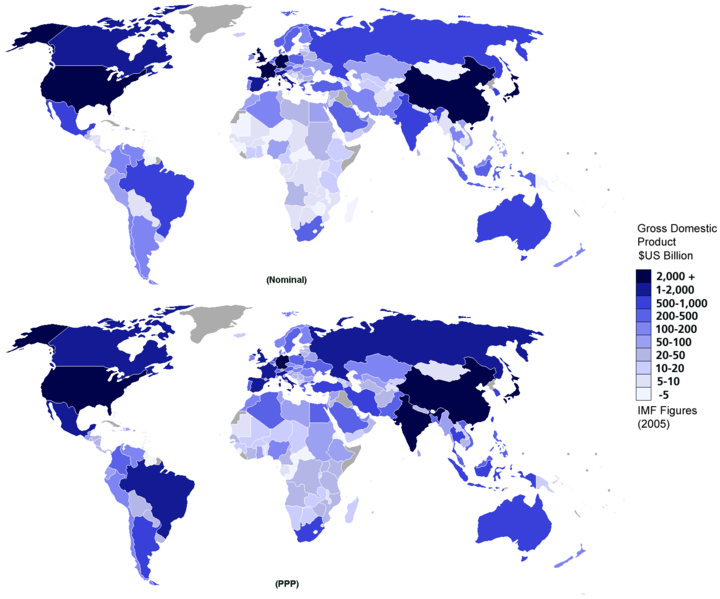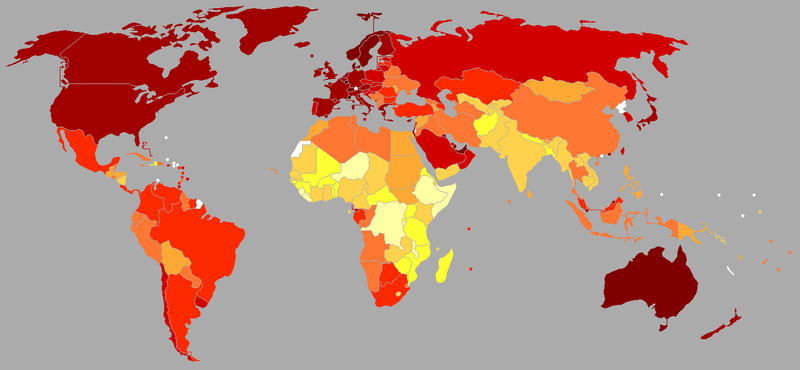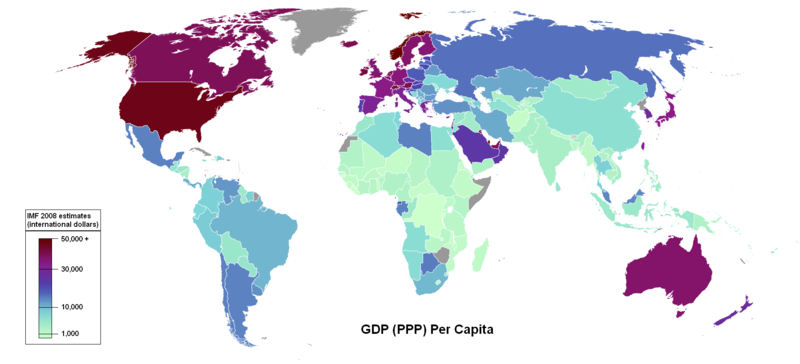
Perm State University
Department of Accounting, Economic Analysis and Audit
Examination paper on the topic:
«Gross domestic product»
Work performed
Student ECM1,2 DB/11
Svyatoshenko Evgeniy
The scientific adviser
Russkikh Galina
Perm, 2012
Contents
History
Determining GDP
GDP vs GNP
Nominal GDP and adjustments to GDP
Standard of living and GDP
Criticisms
Bibliography
Gross domestic product (GDP) refers to the market value of all officially recognized final goods and services produced within a country in a given period. GDP per capita is often considered an indicator of a country's standard of living; GDP per capita is not a measure of personal income. See Standard of living and GDP. Under economic theory, GDP per capita exactly equals the gross domestic income (GDI) per capita.
It is not to be confused with Gross National Product (GNP) which allocates production based on ownership. Gross domestic product is related to national accounts, a subject in macroeconomics.
 CIA
World Factbook 2005
figures of total nominal GDP
(top) compared to PPP-adjusted
GDP (bottom)
CIA
World Factbook 2005
figures of total nominal GDP
(top) compared to PPP-adjusted
GDP (bottom)

Countries by 2011 GDP (nominal) per capita
GDP
(PPP)
per capita
History
GDP was first developed by Simon Kuznets for a US Congress report in 1934, who immediately said not to use it as a measure for welfare (see below under limitations). After the Bretton Woods conference in 1944, GDP became the main tool for measuring the country's economy.
Determining gdp
GDP can be determined in three ways, all of which should, in principle, give the same result. They are the product (or output) approach, the income approach, and the expenditure approach.
The most direct of the three is the product approach, which sums the outputs of every class of enterprise to arrive at the total. The expenditure approach works on the principle that all of the product must be bought by somebody, therefore the value of the total product must be equal to people's total expenditures in buying things. The income approach works on the principle that the incomes of the productive factors ("producers," colloquially) must be equal to the value of their product, and determines GDP by finding the sum of all producers' incomes. [6]
Example: the expenditure method:
GDP = private consumption + gross investment + government spending + (exports − imports), or
![]()
Note: "Gross" means that GDP measures production regardless of the various uses to which that production can be put. Production can be used for immediate consumption, for investment in new fixed assets or inventories, or for replacing depreciated fixed assets. "Domestic" means that GDP measures production that takes place within the country's borders. In the expenditure-method equation given above, the exports-minus-imports term is necessary in order to null out expenditures on things not produced in the country (imports) and add in things produced but not sold in the country (exports).
Economists (since Keynes) have preferred to split the general consumption term into two parts; private consumption, and public sector (or government) spending. Two advantages of dividing total consumption this way in theoretical macroeconomics are:
Private consumption is a central concern of welfare economics. The private investment and trade portions of the economy are ultimately directed (in mainstream economic models) to increases in long-term private consumption.
If separated from endogenous private consumption, government consumption can be treated as exogenous, so that different government spending levels can be considered within a meaningful macroeconomic framework.
Production approach
" Market value of all final goods and services calculated during 1 year . "
The production approach is also called as Net Product or Value added method. This method consists of three stages:
Estimating the Gross Value of domestic Output in various economic activities;
Determining the intermediate consumption, i.e., the cost of material, supplies and services used to produce final goods or services; and finally
Deducting intermediate consumption from Gross Value to obtain the Net Value of Domestic Output.
Symbolically,
Gross Value Added = Value of output – Value of Intermediate Consumption.
Value of Output = Value of the total sales of goods and services + Value of changes in the inventories.
The sum of Gross Value Added in various economic activities is known as GDP at factor cost.
GDP at factor cost plus indirect taxes less subsidies on products is GDP at Producer Price.
For measuring gross output of domestic product, economic activities (i.e. industries) are classified into various sectors. After classifying economic activities, the gross output of each sector is calculated by any of the following two method
By multiplying the output of each sector by their respective market price and adding them together and
By collecting data on gross sales and inventories from the records of companies and adding them together
Subtracting each sector's intermediate consumption from gross output, we get sectoral Gross Value Added (GVA) at factor cost. We, then add gross value of all sectors to get GDP at factor cost'. Adding indirect tax less subsidies in GDP at factor cost, we get GDP at Producer Prices.
